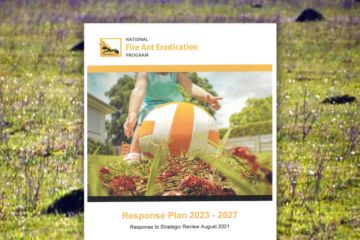The Invasive Species Council has called on the Rockcliff government to conduct a study into the enormous economic costs of feral deer in Tasmania, after a study commissioned by the government found deer hunting had tiny benefits for the Tasmanian economy.
Jack Gough, Invasive Species Council advocacy manager, said:
‘For years the shooting lobby has claimed feral deer hunting has mythically high economic benefits, but this study blows that claim out of the water.
‘This study was an election commitment to the shooting lobby, overseen by the shooting lobby and based on self assessments of spending by shooters in a voluntary survey.
‘Yet even with all these biases, it still found feral deer hunting only contributes $29 million per year to Tasmania’s $37 billion economy. That’s less than 0.0008% of gross state product, or almost 20,000 times less than the value of the Tasmanian agriculture.
‘When this is stacked against the huge costs feral deer cause to farming, forestry, road users and the environment in Tasmania, protecting feral deer to support hunting is clearly wrong.
‘The Rockcliff Government should now commission a study to quantify the huge economic damage feral deer cause, so that Tamsanians have the full picture.
‘We only have to look to the mainland to see how bad things can get. South Australia just released a report finding feral deer will cost their economy half a billion dollars in a decade if they are not controlled.
‘Feral deer destroy crops, strip and eat new saplings, cause soil erosion and damage infrastructure. This directly hurts the livelihoods of rural communities.
‘Feral deer are causing more road crashes, risking lives and increasing insurance costs.’
Northern midlands farmer Simon Cameron said:
‘At the core of the report is the clear message that there is no economic benefit to Tasmania from feral deer hunting.
‘The report makes it clear that if recreational hunters didn’t spend on feral deer hunting they would use that same money some other way.
‘When you add up the costs to farmers and forestry, as well as the road toll and environmental damage, it’s clear protecting feral deer is costing Tasmanians millions for a few votes. It’s time for a big rethink.’
Nicholas Sawyer, Tasmanian National Parks Association president, said:
‘Feral deer are one of Tasmania’s worst emerging environmental threats. As they spread into new areas, like our World Heritage Wilderness or the Freycinet Peninsula, they trample plants, ring-bark young trees, spread weeds and damage stream banks.
‘Almost half a million of taxpayers dollars has been spent recently to try to eradicate feral deer from the Tasmanian Wilderness World Heritage Area.
‘This sort of funding will need to keep being spent unless much stronger measures are taken to control feral deer in the Midlands and stop them reinvading the national park.’
Dr Kerry Bridle, an ecologist based in the Tasmanian Midlands, said:
‘The Tasmanian Midlands region has suffered from dramatic biodiversity decline, and this decline is on-going with feral deer one of the main factors.
‘Feral deer are increasing the cost of regeneration. It now costs about $30 to protect a single sapling from feral deer. This is almost 10 times higher than the amount allocated in grants awarded using public funds for biodiversity protection.
‘This means that landholders must pay the shortfall to ensure our forests will persist into the future, providing habitat for native wildlife and shade and shelter for livestock.’
Media enquiries:
- (02) 8006 5004
Images and footage of feral deer in Tasmania are available for use by the media, with attribution, here.
Background notes
- The Economic Contribution of Recreational Hunting and Shooting to the Tasmanian Economy was produced for the Tasmanian government to fulfil a 2021 election commitment and was overseen by a steering committing comprised of representatives from the Sporting Shooters Association of Australia (Tasmania), Australian Deer Association (Tasmania) and the Tasmania Deer Advisory Council.
- The study found deer hunting contributed a total of $29.3 million per year to Tasmania’s Gross State Product (GSP), which is 0.00079% of Tasmanian’s total GSP for 2021-22 of $36.7 billion.
- The study’s findings were based on a voluntary survey of shooters, who self nominated their expenditure during the past 12 months. No receipts or proof was required.
- The study found ‘if hunting… were to (hypothetically) cease, the economic activity currently contributed by hunting… would not cease; although it may change as hunters… turn to alternative ways to recreate or spend/save their money’
- Feral deer are a major risk to Tasmania’s environment, cultural heritage, primary industries, and public safety, with the overall cost to Tasmanians estimated to be as high as $100 million per year.
- Feral deer numbers have exploded across Tasmania, growing by forty-fold since 1985 up to potentially 100,000 across 27% of the state. The majority of feral deer are in the Midlands, but satellite populations have spread to the Tasman and Freycinet peninsulas, Bruny and King islands, around Hobart, Launceston, and in the northwest.
- Feral deer are causing damage to native vegetation and ecologically fragile areas through overbrowsing, overgrazing, and trampling, with negative impacts on biodiversity and the Aboriginal cultural landscape.
- Feral deer are costing farmers an estimated $10-80 million per year in damaged crops and infrastructure, with similar impacts on forestry.
- Feral deer are a major risk on the road with large males weighing upwards of 80kg. Between 2013 and 2021, 68 deer-vehicle collisions were recorded, with more being recorded elsewhere or unrecorded.
- Feral deer are protected in Tasmania as a game resource under the Wildlife (General) Regulations 2010. Tasmania and Victoria remain the last two states in Australia that continue to treat feral deer as a hunting resource instead of managing them as an invasive species.
- The South Australian government have recently released a detailed 10 year plan to eradicated feral deer from their state due to the unacceptable cost to agriculture, road users, infrastructure and the environment.
- A 2022 economic report by Frontier Economics found the total costs of feral deer to the Victorian economy could reach $1.5 billion and $2.2 billion over the next 30 years.









